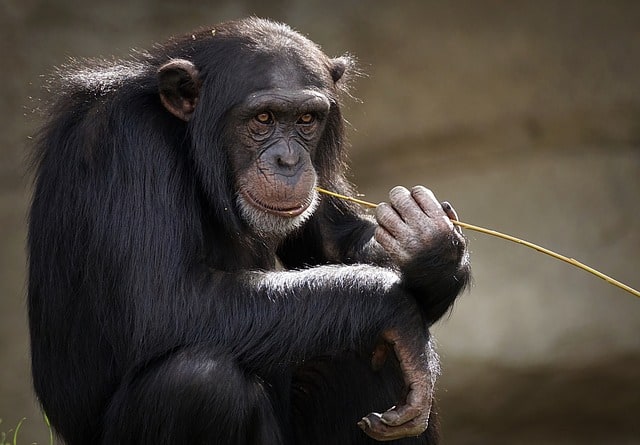Madelaine Böhme from the University of Tübingen and her colleagues from Germany, Bulgaria and the United States have proposed another scenario for the transition of human ancestors from movement on four limbs to upright posture. They studied the fossils of a new species of anthropoid apes, who lived 11.6 million years ago, and concluded that they travelled through the trees on their hands, as orangutans or chimpanzees do, or walked on two legs along branches, and possibly along the ground.
Scientists in the 19th century tried to understand how and when hominids began to move on two legs. Now there are several hypotheses explaining the occurrence of direct movement. The most famous of them is connected with the beginning of the manufacture of tools – in order to make them, to wear and use them, hominids needed free upper limbs. Other hypotheses explain the directness of the need to look over tall grass in the savannah, travel long distances or reach for growing on small trees and bushes of leaves and fruits. Some researchers attribute the appearance of directing to several factors. However, it is impossible to confirm or disprove these hypotheses due to the lack of a sufficient number of well-preserved skeletons like early hominids and fossils of more ancient primates, their possible ancestors.
Since the 1970s, paleoanthropologists have found skeletons of primates living in Europe and Africa in the Miocene, 5.3 to 13 million years ago. Presumably, during this period the evolutionary branches of apes and ancestors of the genus Homo diverged. Some of the fossils are well preserved, but there were no intact long bones (limb bones) and especially their joint-forming surfaces. Therefore, it is difficult to reconstruct in detail the modes of movement of these monkeys. To date, there are two main hypotheses. One of them is based on the analysis of skeletons of modern old-world monkeys, fossils of Miocene monkeys and Ardipithecus ramidus, these ancient hominids that lived for about 4.4 million years back, moved on both two and four limbs. According to this hypothesis, direct movement in humans was the result of the transformation of one of the modes of movement on four legs, which was characteristic of the common ancestor humans and apes. Another assumption is based on the analysis of fossils of the Miocene primates. Scientists who agree with him believe that bipedalism arose from the way of moving between the trees, when primates periodically hang under a branch or between two branches, holding on to them with two or four limbs.
Researchers described fossils of at least four new species and a species of apes that lived about 11.6 million years ago. The authors named the species Danuvius guggenmosi. In 2011-2018, researchers found partial skeletons of primates in southern Germany, including long limb bones, including ulnar, femoral and tibia bones, vertebrae, bones of the arms and legs. Their excellent preservation allowed scientists to describe the morphology of the limbs and spine of monkeys, as well as the general proportions of the body.
It turned out that the ancient primate was similar in size to modern baboons (their height can reach 110 centimetres). Judging by the structure of his teeth, he belonged to Dryopithecus apes. These primates lived 9-12 million years ago in Eurasia and East Africa. Apparently, they spent most of their time on trees. Some researchers believe that Dryopithecus monkeys may have been the ancestors of modern chimpanzees, gorillas and humans.
According to the researchers, D.guggenmosi moved in a way that combined elements of upright posture and brachiation (movement on branches with upper limbs). Judging by the fossils, the monkeys’ hands were long. They had a flexible elbow and strong fingers, well-adapted for grasping branches. In the structure, they resembled the upper limbs of modern apes, well adapted for climbing trees.
Lower limbs D.guggenmosi at the same time were more like human legs than the feet of apes. Judging by the structure of the femur and tibia bones, these primates part of the time moved on two legs. And they walked on straight limbs like humans, not bent ones like chimpanzees or gorillas. They had strong and long toes. They probably clung to tree branches, so the scientists concluded that D.guggenmosi part of the time moved through the trees on two legs.
The authors believe that the common ancestor of modern chimpanzees, orangutans, gorillas and humans could move this way. Fossils D.guggenmosi help to understand how a straight-look in humanoid primates could appear. Until fossils of African apes are found to understand their evolution, the model proposed in the paper best describes primates from movement on four limbs to bipedalism.
